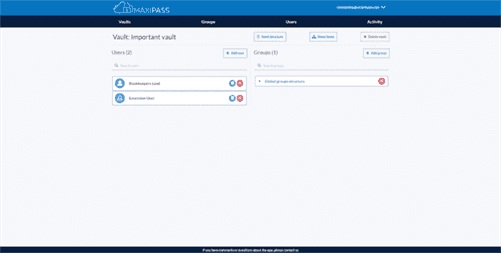Lean principles involve streamlining production processes to eliminate waste and increase efficiency. You can optimize the production process and track progress more effectively by identifying and eliminating bottlenecks. Product traceability with a limited scope, such as monitoring one specific part of the supply chain.

Maintaining a balance to avoid vertical channel conflict is all about coming up with incentives that are fair for the amount of work necessary to register a lead. Too much competition or reseller partners that aren’t playing fair by undercutting other resellers can quickly turn the relationship sour. The practice allows you as a business to keep your partners not only engaged in the process horizontal traceability of recording leads accurately but also preventing anyone else from working on those same leads. This tends to focus on competition over leads and customers, overlapping sales networks, and channel saturation. In the matrix, the developer could click on “Fill in personal patient data” to navigate to this artifact and perform the appropriate act to keep the traceability consistent.
Overview of Identification and Traceability
This record can then help track a product through the supply chain and into the hands of the customer. End-to-end traceability offers many benefits for manufacturers, including improved quality control, decreased product defects, and reduced liability. Analyze the software design to ensure that partitioning or isolation methods are used to logically isolate the safety-critical design elements from those that are non-safety-critical. NASA-specific bidirectional traceability resources are available in Software Processes Across NASA (SPAN), accessible to NASA users from the SPAN tab in this Handbook. The key to determining if the software is safety-critical software is the hazard analysis process. Software test procedures are created to verify the software requirements for a project.

Rempel & Mäder (2016) also focus on traceability difficulties, providing an assessment model and a comprehensive classification of possible traceability problems and assessment criteria for systematically detecting those problems. Read the article in ICT now to learn more about considerations for implementing traceability workflows using manual and digitized processes. The quality management system of the International Organization for Standardization (ISO) is generally called the ISO 9000 series or ISO 9000 family and ISO 9001 is the most important standard in this family. A quality management system (QMS) is defined as “part of a management system intended to lead and manage an organization regarding quality.”
What is vertical channel conflict?
When food or feed is unsafe, business operators are obliged to withdraw or recall it. They are also obliged to notify the competent national authorities so as to be able to monitor whether the appropriate measures have been taken or require that additional measures be taken for reducing or eliminating a food safety risk. Consumers must have confidence and assurance that the food they buy will do them no harm or have an adverse effect. Common usage is to take the identifier for each of the items of one document and place them in the left column. When an item in the left column is related to an item across the top, a mark is placed in the intersecting cell.
This article extends an existing model-driven development methodology to incorporate traceability as part of its development tool. The tool has been used successfully by several companies in real software development projects, helping developers to manage ongoing changes in functional requirements. The systematic evaluation of traceability management in industrial projects constitutes a promising area for future work.
Quick evaluation of potential changes
Environmental Protection Agency (EPA) and specialty gas companies to increase the availability of standard gas mixtures with certified composition that support the “Emissions Trading” provision of the 1990 Clean Air Act. The goals are to reduce or eliminate redundant audits by having one evaluation of a laboratory satisfy the needs of the user community and to have the results of calibrations or tests accepted across borders. The certificate of each Standard Reference Material specifies the conditions under which NIST stands behind its measurement results after the SRM has left NIST.
An important component of the lean manufacturing mindset, cellular manufacturing is a great technique for process improvement. This can be due to a 3rd party business incorrectly handling your finished goods after they left your warehouse or a supplier sending you faulty materials or components. Without proper records in place, locating the products will be difficult and will ultimately increase the cost of the product recall, not to mention the damage it’ll do to your brand. Doing this will help you get a granular picture of your operations and more of an idea of what could be improved on your production lines.
Microservices and REST APIs: the key to digital transformation
Product traceability in manufacturing not only needs insights into your production, but improving product traceability also needs a better understanding of your supply chain. The project should have bi-directional traceability between the software requirements and software-related system hazards, including hazardous controls, hazardous mitigations, hazardous conditions, and hazardous events. Keep in mind that a single requirement could trace to multiple architectural elements, design elements, etc. Design elements could trace back to multiple source requirements, so the relationships identified in the matrix are not required to be one-to-one.
- Confirm 100% code test coverage has been achieved or addressed for all identified software safety-critical components or provide a risk assessment explaining why the test coverage is not possible for the safety-critical code component.
- The purpose is to provide examples of tools being used across the Agency and to help projects and centers decide what tools to consider.
- The approach comprises a high-level, methodology-independent metamodel and its instantiation for a web methodology.
- Testing your project and gathering requirements will be the most time-consuming and tedious part of using a requirements traceability matrix.
- Briand, Labiche & Yuea (2009) focus on changes between two versions of a UML model (vertical traces only) and analyze the impact of those changes using formally defined impact analysis rules (written in Object Constraint Language).
- The certificate of each Standard Reference Material specifies the conditions under which NIST stands behind its measurement results after the SRM has left NIST.
This figure present how the test case can be generated from requirements using transformations in our example. When the user selects the option “Anamnesis” the system displays the corresponding form. The user inputs the required information and the system checks that the data is correct and complete. If it is, the system creates the anamnesis and returns to the starting point. If not, an error message is generated and the system returns to the anamnesis form. When all people related to the supply chain, including consumers, can recognize the status of the product and objects and information has been linked, tracing forward/back can be done easily.
Vertical AND Horizontal Slices in Agile Software Development
NIST Laboratories also provide a range of training courses and workshops on measurement practices. Topics covered include precision thermometry, temperature measurement by radiation thermometry, laser measurements, gage block calibration, time and frequency fundamentals, dimensional horizontal traceability metrology, pressure, etc. The provider of the result of a measurement is responsible for establishing the traceability of this result. The provider of the result of a measurement is responsible for supporting its claim of the traceability of that result or value. [1] Homogeneous materials or artifacts that are used to test and evaluate the measurement performance and fitness for purpose of measuring systems (VIM §3.2) or measurement procedures (VIM §2.6).

For example, software can’t trigger a critical sequence in a single fault-tolerant manner using single sensor input. Since the 1990s, the advantages and problems of traceability have been discussed in several academic works, including the surveys of Gotel & Finkelstein (1994) and Winkler & Pilgrim (2010) and the articles of Haouam & Meslati (2016) and Charrada et al. (2011). The first, a cornerstone paper in requirements traceability research, identified the main problems of requirements specification.
Barcode and RFID systems
These experiences, and in particular the iMedea example described in the Materials and Methods section, demonstrate how effectively the proposed approach addresses challenge Ch.4. Demonstration of the benefits of traceability in real examples managed by real users, cited in “Materials and Methods”. They plan to carry out a software experiment (López et al., 2020) based on the principles presented in Vegas (2017) to guarantee the benefits of the proposed approach in a more scientific manner.